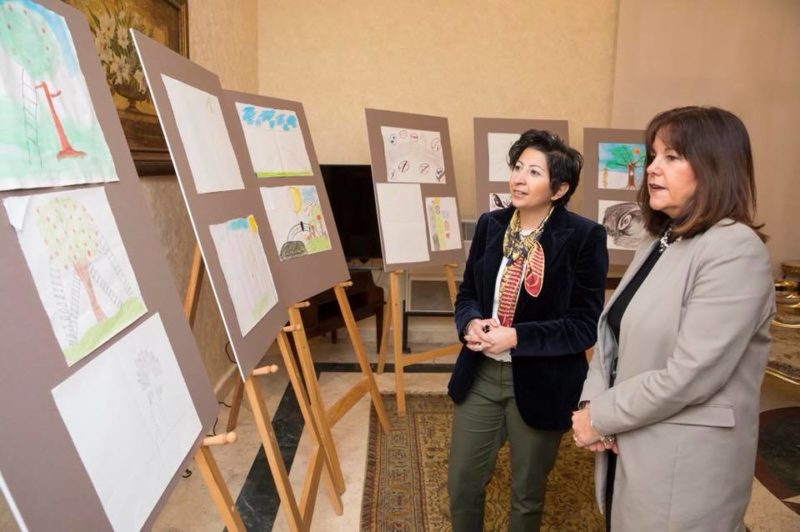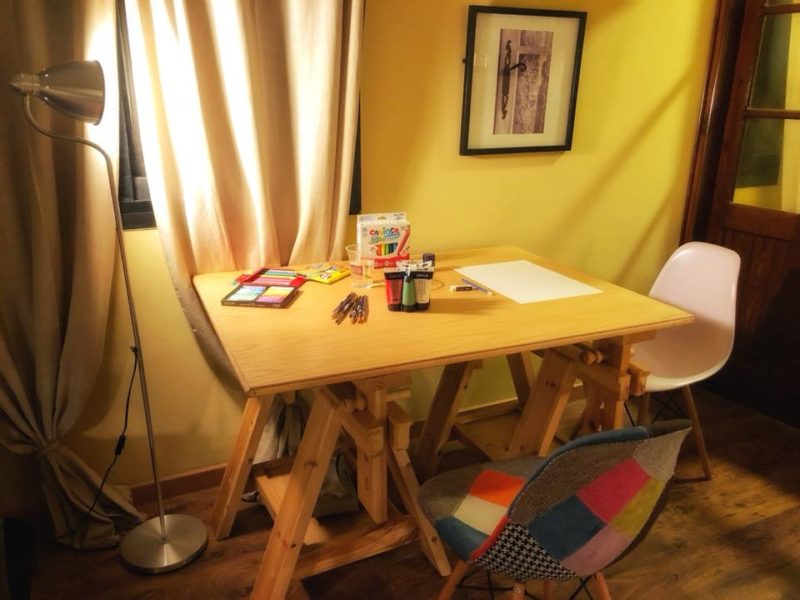No matter what your profession is, you might consider taking a break from work (and from everything, really) and paint your mental pain away. Carol Hammal, an art psychotherapist based in Cairo, Egypt and Philadelphia, USA, walked us through the process of art therapy.
The Myth
First things first, let’s agree that one does not have to be an artist to practice art therapy (we had our doubts too!) “Clients do not need to have any art skills to participate in art therapy sessions. The art therapist, however, needs to have a fine art background prior to studying and practicing art therapy,” explained Hammal. This type of therapy is suitable for all ages and is used to aid with stress, diagnose and treat severe mental illnesses. In all cases, the artwork produced during the session reveals the client’s unconscious mind, helping them make sense of their visual expressions that reflect their inner struggles.

Hammal mentioned that the materials and techniques used differ in each session. However, “the art therapist gives a very brief directive for a topic, for example, draw a place where you feel safe, or draw a person picking an apple from a tree. Actually the latter is an art therapy assessment which can be very useful in evaluating specific diagnostic criteria. For example, it can be used to monitor signs of depression or delusions and paranoid thoughts.” After every client is done with their painting, the therapist analyses them giving the client a one-on-one verbal feedback. Typically, an art therapy session includes verbal communication as well as the artistic exercises.
The Analysis
The art therapist’s role is not just to analyze the product, but also the process of creating this product. “The process itself of art-making is as equally important as the resulting image. The art therapist needs to observe the client as they draw and monitor different aspects during art-making such as the time used, materials chosen, the amount of erasing and reworking an area, the line’s structure, the way they’re sitting while they draw. All such aspects tell the art therapist a lot of information that can be used during the verbal process that takes place afterwards.”

Many choose art therapy over regular therapy because they believe they won’t have to talk much at first. However, the powerful tool of art-making will enable them to break down their defenses, which could be overwhelming. “It is necessary for art therapy sessions to be conducted by masters-trained art therapists in order to help clients process this state of overwhelm and help them finish the session in a stable emotional state. The worst thing that untrained art therapists can do is open clients up through art making and not therapeutically process what emerged; they would cause a lot more harm than good in such cases.” Following the session, an art therapist might refer a client to their primary therapist if needed.




























